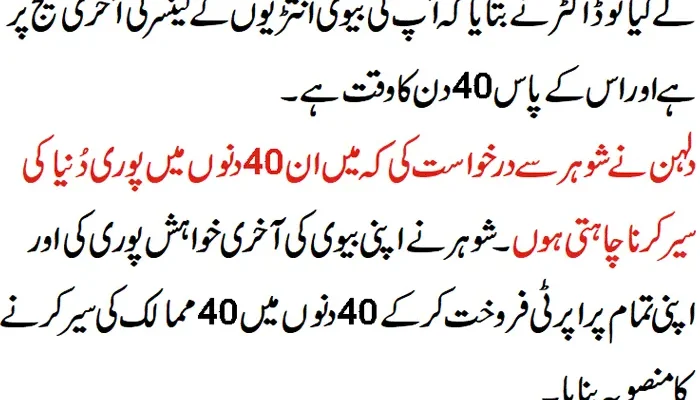How to Survive a Heart Attack Alone: Expert Advice for Solo Survival
What Is a Heart Attack?
When the flow of oxygen-rich blood to a portion of the heart muscle becomes blocked, this condition is known as a heart attack or myocardial infarction. The section of the heart muscle begins to die if blood flow is not quickly restored. If left untreated, this can cause severe health problems and even death.


The Importance of Being Able to Survive on Your Own
It’s important to know how to survive a heart attack on your own, especially if you live alone or spend a lot of time by yourself. Correct, immediate action can lessen the severity of heart damage and significantly increase survival chances.
A Summary of the Article’s Content
This article provides in-depth advice on how to recognize the symptoms of a heart attack, what to do right away if you’re the only one, the causes and risk factors, how to prevent them, and how to deal with them over the long term. In addition, personal stories and expert perspectives are included to provide a comprehensive understanding and useful guidance.
Getting a handle on Heart Attacks
A Heart Attack: What Happens?
One or more coronary arteries become blocked during a heart attack, preventing blood flow to the heart muscle. Plaque, a substance that is a mixture of fat, cholesterol, and other substances, frequently causes this blockage. A blood clot forms and blocks the artery when a plaque ruptures. The most common kinds of heart attacks
– ST-Elevation Myocardial Infarction (STEMI):
This type of heart attack is the most severe and occurs when a coronary artery becomes completely blocked.
– Non-ST-Elevation Myocardial Infarction (NSTEMI): This type of myocardial infarction, which results in a partial blockage of the coronary artery, is less severe but still dangerous.
– Coronary Fit (Quiet Heart Attack): Happens when there is a transitory fit in a coronary supply route, lessening blood stream to the heart muscle.
Prevalence and Statistics
Heart attacks account for the majority of deaths worldwide. Since cardiovascular diseases, including heart attacks, are responsible for approximately 17.9 million deaths annually, the World Health Organization (WHO) stresses the importance of comprehending and controlling this health risk.
Heart Attack Signs and Symptoms
Normal Side effects
– hest Pain or Discomfort: Also known as fullness, pressure, or squeezing in the chest.
– Shortness of Breath: This can occur with or without discomfort in the chest.
– Pain in Other Areas: Uncomfort in one or both arms, the back, the neck, the jaw, or the stomach
– Cold Sweat: Abrupt beginning of perspiring without obvious reason.
– Queasiness or Vomiting: Feeling wiped out to the stomach or really heaving.
Unusual Signs
– Fatigue: Unusual exhaustion or lack of vitality, especially in women.
– Lightheadedness: Experiencing faintness or dizziness.
– Sleep Disturbances: Sudden or unexplained difficulty falling asleep.
Preliminary Signs
– Angina: Chest torment or uneasiness that happens during actual effort and is feeling quite a bit better by rest.
– Intermittent Symptoms: These are symptoms that come and go, like episodes of chest pain.
Steps to Take Right Away
Identifying Warning Signs
It is essential to be able to quickly recognize the symptoms of a heart attack. To ensure prompt action, familiarize yourself with both typical and unusual symptoms.
Getting Help in an Emergency
When you notice the symptoms of a heart attack, the first thing you should do is call emergency services right away. To do this in the United States, dial 911. Clearly inform the dispatcher of your symptoms and location.
Keeping Your Cool
The situation can be made worse by panic. Concentrate on remaining as calm as possible so that you can think clearly and take the necessary actions to improve your chances of survival.
Ways to Improve Your Survival Chances
Taking Aspirin by Chewing Take one tablet of aspirin, which typically contains 325 mg, by chewing it. Aspirin can ease blood flow through a narrowed artery by reducing blood clotting.
Technique for Coughing
If you feel faint or notice symptoms while alone, some experts recommend a coughing technique, which is controversial and not widely recommended. Profound, musical hacking can assist with keeping up with blood stream and cognizance for a brief period until help shows up. #6 Choosing a Secure Position Rests with your head and shoulders raised marginally. Your heart may experience less strain in this position, making it easier to breathe.
Communicating with Others via Phone
Utilize your phone to inform friends and family of your situation whenever possible. Even if you have already contacted emergency services, it can be helpful to have additional support.
Risk Factors and Causes
Factors Biological
– Age: Hazard increments with age, especially after 45 for men and 55 for ladies.
– Sex: Although women’s risk rises and may surpass men’s post-menopause, men generally face a higher risk.
– Family History: A family background of coronary illness can increment risk.
– Pre-existing Conditions: Risk factors include diabetes, high cholesterol, and high blood pressure.
Factors in One’s Life
– Diet: High admission of soaked fats, trans fats, and cholesterol can add to coronary illness.
– Physical Inactivity: Obesity and an increased risk of heart disease can result from a lack of physical activity.
– Smoking: Smoking is bad for the blood vessels and makes it more likely that you will get heart disease.
– Excessive Alcohol Consumption: Can result in heart disease and high blood pressure.
Predisposition of Genetics
Heart disease can be made more likely by certain genetic factors. These include high cholesterol levels caused by inherited conditions like familial hypercholesterolemia.
Natural Impacts
– Air Pollution: Being around pollutants can make it more likely that you’ll have a heart attack.
– Stressful Environments: Conditions and behaviors that raise the risk of heart disease can be exacerbated by chronic stress.
Prevention and altering one’s lifestyle Healthy Eating
Take on an eating routine wealthy in organic products, vegetables, entire grains, lean proteins, and sound fats. Keep away from handled food sources, extreme sugar, and high sodium consumption.
Regular Activity
Each week, participate in 75 minutes of vigorous-intensity or 150 minutes of moderate-intensity aerobics. Muscle-strengthening exercises should be performed at least twice per week.
Avoiding Smoking and Drinking Too Much
Stop smoking and drink moderate amounts of alcohol (one drink per day for women and two drinks per day for men).
Reducing Stress
Engage in stress-relieving activities like yoga, deep breathing, and meditation. It’s also essential to get enough sleep and rest.
Getting Regular Medical Exams
Ordinary visits to your medical care supplier for check-ups can help recognize and oversee risk factors, for example, hypertension, elevated cholesterol, and diabetes.
Tests and Diagnoses
ECG (electrocardiogram)
An electrocardiogram (ECG) records the heart’s electrical signals and can determine whether and where your heart muscle has been damaged by a heart attack. Tests on the blood Heart muscle damage can be detected by measuring cardiac enzymes and other substances in the blood. For instance, elevated levels of trophonin can indicate a heart attack.
Echocardiogram
Doctors can see how the heart is pumping and pinpoint areas of damage with the help of this test, which uses sound waves to create images of the heart. #6 Coronary angiogram Using a special dye and X-rays, coronary angiography looks inside your arteries and reveals blockages.
Tests of Stress
Stress tests are a way to see how your heart responds to physical stress. Typically, they involve exercising or taking a medication to speed up your heart rate.




